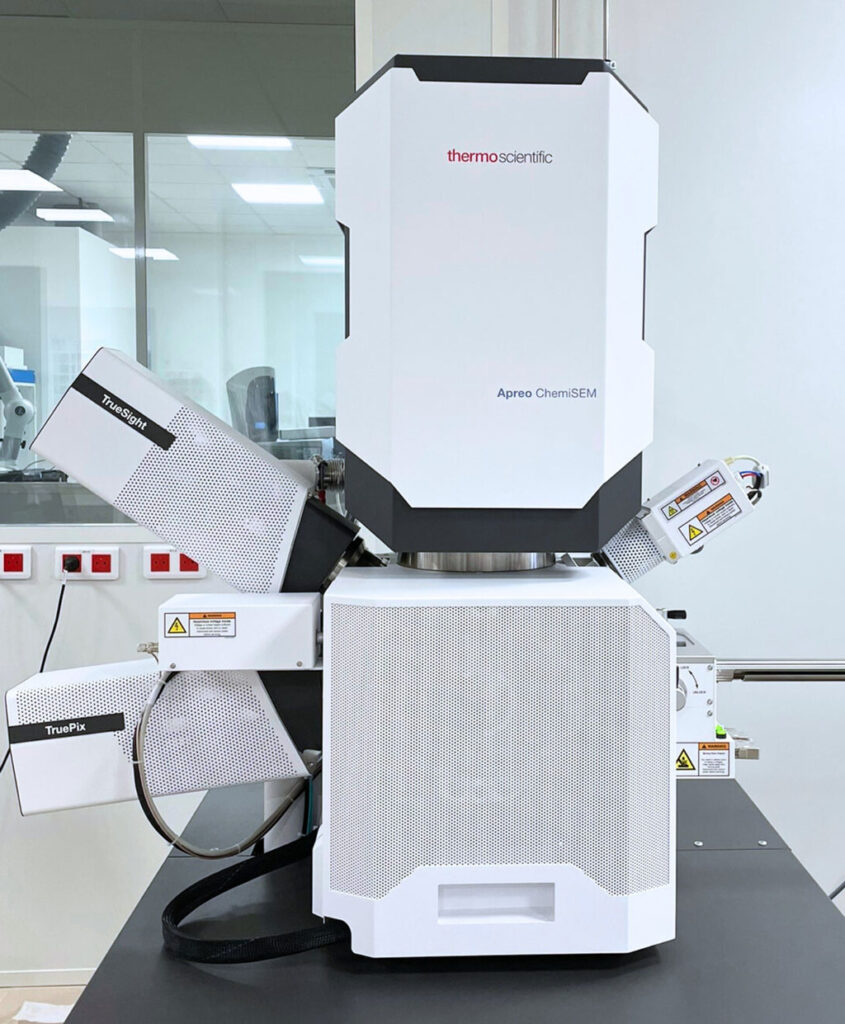SEM-EBSD microstructure analysis
You wish to carry out a microstructure analysis by SEM-EBSD
Why analyse the microstructure of materials?
Firstly, knowledge of the microstructure of a material’s surface is a key parameter in the development of a new product or the elimination of new anomalies.
In the case of wear problems (erosion/abrasion, adhesion, corrosion, fatigue) or rupture, knowledge of the microstructure of the surface concerned is crucial.
Knowledge of the microstructure of a material’s surface also provides access to a range of information on its physico-chemical properties, which is essential for production processes or regulatory analysis.
As a result, every company faced with one or other of these issues calls on surface microstructure characterization skills.
What is Scanning Electron Microscopy EBSD (SEM-EBSD)?
Scanning Electron Microscopy (SEM) coupled with Electron Backscatter Diffraction (EBSD) is an advanced method used to analyse the crystalline microstructure of materials, particularly metals. By combining high-resolution SEM imaging with detailed analysis of the crystal structure using EBSD, this technique offers an in-depth understanding of the properties of materials. Indeed, all these microstructural analysis generally complement preliminary SEM inspections (appearance, chemical composition).
The SEM-EBSD combination reveals essential information such as crystalline orientation, grain boundaries, crystalline phases and structural deformations. These data are crucial for exploring the impact of microstructure on the mechanical and physical properties of materials.
Microstructure analysis using EBSD SEM
Analysis of crystalline orientation
Identification of crystalline phases
Detection of crystalline defects
Grain boundary mapping
Analysis of crystallographic textures
Characterization of polycrystalline materials
Key points of EBSD analysis :
EBSD provides micrometric and even nanometric data on crystal texture, enabling precise analysis of the microstructure.
this technique can be used to visualise how the grains of a material are oriented in relation to each other, helping to understand their mechanical properties.
EBSD identifies and locates the different phases present in a sample, a crucial step for multiphase materials.
EBSD highlights dislocations, crystalline deformations and other defects, providing essential information for engineering and materials research.
Our solutions: characterization of the microstructure of materials using SEM-EBSD
Why choose FILAB for SEM-EBSD microstructure analysis?
Within the FILAB laboratory, an entire department is dedicated to materials expertise, bringing together PhD students and specialist engineers with highly qualified know-how. This level of expertise is backed up by state-of-the-art analytical facilities covering 5,200 m², including 2 SEM-EDX and 1 SEM-EBSD, which provide fast, reliable analysis at competitive prices.
Our particularly powerful, high-performance SEMs can be used for both rapid diagnostics (pollution, inclusion, etc.) and more complex assessments requiring in-depth analysis.

The stages in a microstructural analysis using SEM-EBSD
1 - Preparing the sample
Preparation is a crucial step in ensuring reliable and accurate microstructural analysis:
- Cleaning: removal of contaminants (dust, oil, etc.) using solvents or suitable techniques.
- Mechanical polishing: the sample is polished with abrasive discs of decreasing granulometry to obtain a smooth, flat surface.
- Ion polishing or ion abrasion (Cross Polisher): when ultra-precise finishes are required, ion beam polishing (ion milling) is carried out to eliminate the artefacts introduced during mechanical polishing. This is particularly useful for fragile or heterogeneous materials.
- Coating (if necessary): non-conductive samples are coated with a thin metallic layer (gold, carbon) to avoid electrostatic charges during analysis.
2 - Loading and positioning in the SEM
- The sample is mounted on a specific support (stub) compatible with the microscope.
- The sample is introduced into the vacuum chamber to prevent secondary electrons from scattering.
- Correct orientation of the sample, with a typical inclination of 70° for EBSD analysis.
3 - SEM image acquisition
- Parameterisation: adjustment of acceleration voltage, beam current and working distance to optimise resolution.
- Initial observation: capture of high-resolution images to observe morphology, inclusions and defects.
4 - EBSD analysis
- Positioning: the sample is tilted to maximise the capture of diffraction patterns.
- Pattern acquisition: the EBSD detector records the patterns produced by the diffraction of backscattered electrons.
- Crystallographic mapping :
- Grain orientation and crystal phase identification.
- Grain boundary detection and texture mapping.
- Analysis of structural deformations or crystalline defects.
- Data processing: pattern analysis using crystallographic databases
Key preparation points
- Mechanical polishing to eliminate initial irregularities.
- Ion abrasion or Cross Polisher for an ultra-precise finish, ideal for EBSD analysis.
- Customised cleaning and coating for an optimal surface for microscopic observation.








